Mountain Lions
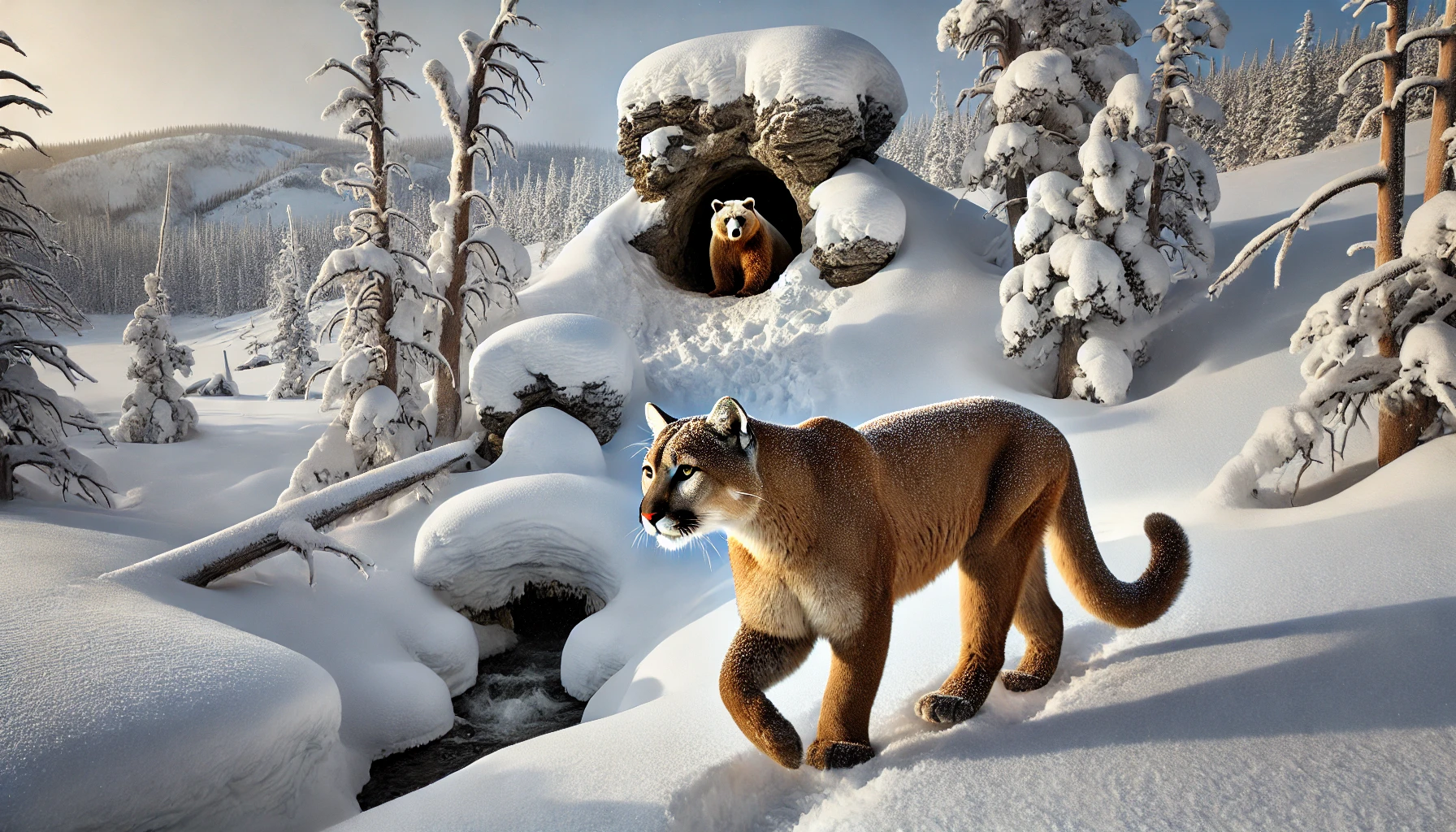
Concept: Michael Gitter
Mountain lions, also known as cougars or pumas, are stealthy predators that can often be found hunting in the quieter, colder months when prey is harder to find. With a vast range and excellent climbing abilities, these apex predators are capable of taking down prey much larger than themselves, including deer and even elk. In national parks like Yellowstone, their quiet and solitary nature makes them elusive, but they are always on the prowl, especially during the winter when other animals are more sluggish. Visitors are advised to stay vigilant in cougar territory.
Wolves
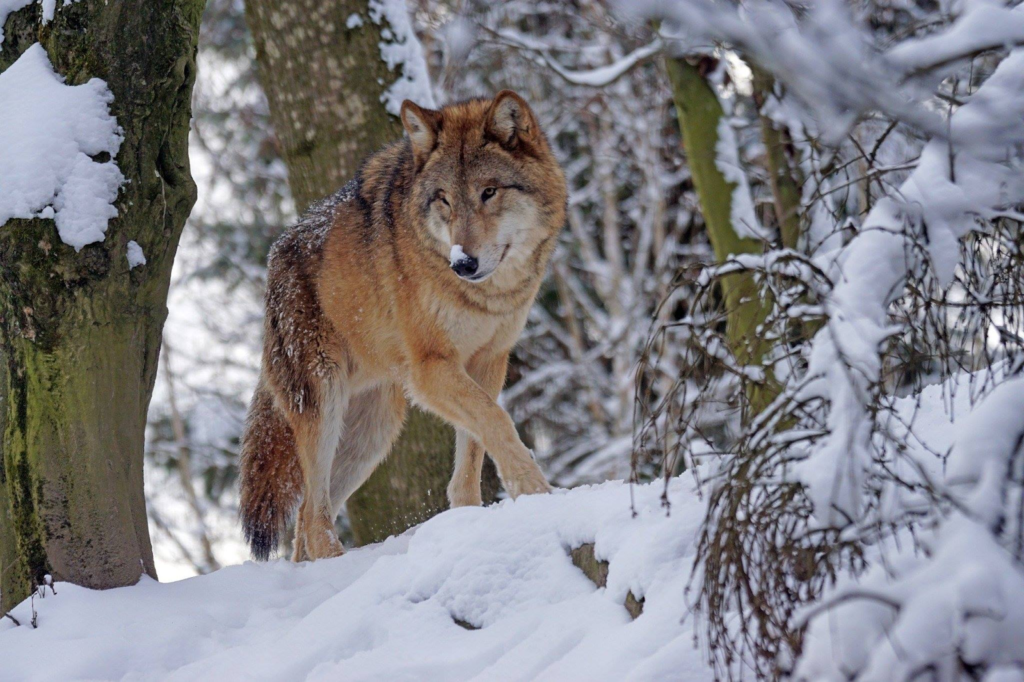
Pix4free
Wolves are another apex predator active during the winter months, especially in Yellowstone, where they are a critical part of the ecosystem. These highly social creatures hunt in packs, preying on larger herbivores like bison and elk. Unlike bears, wolves do not hibernate and instead are well-adapted to the cold, often becoming more aggressive as they hunt for food to sustain themselves through the harsher months. If you encounter a pack, it’s essential to maintain distance and avoid startling them, as their strength and teamwork make them formidable hunters.
Coyotes

Wikimedia Commons
While smaller than wolves, coyotes are still skilled predators that are active throughout the year. In national parks, they are opportunistic hunters, often scavenging food but capable of hunting small mammals, birds, and even young deer. Coyotes are highly adaptable to a range of environments, making them a common sight in national parks, especially during the winter months when food sources may be scarce for larger animals. Despite their size, they should not be underestimated, as they are swift, cunning, and sometimes hunt in small packs.
Bobcats
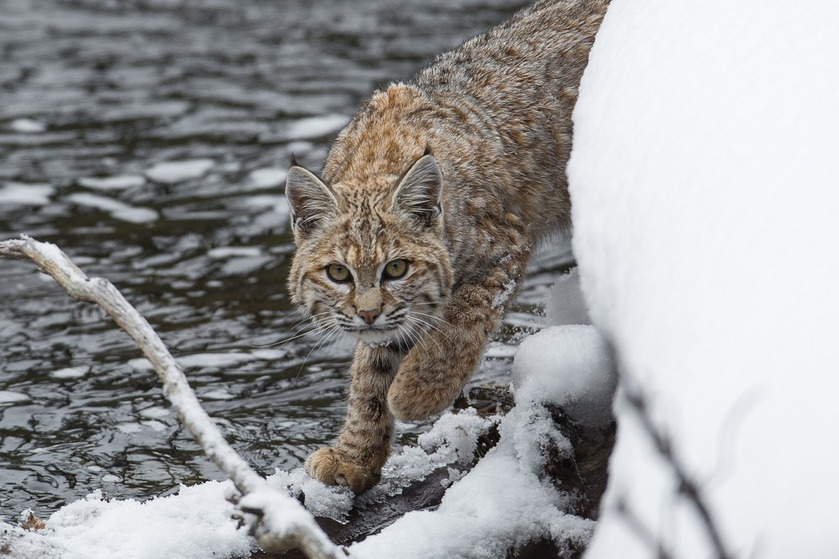
PICRYL
Bobcats, though smaller than mountain lions, are another stealthy predator found in national parks across North America. These elusive creatures prefer to hunt alone, preying on small to medium-sized mammals, birds, and even insects. While they are typically more active at night or during twilight hours, bobcats may hunt during the day if food is scarce. Visitors might not see these stealthy hunters, but they are still a significant presence in the ecosystem, especially when larger predators like bears are in hibernation.
Golden Eagles
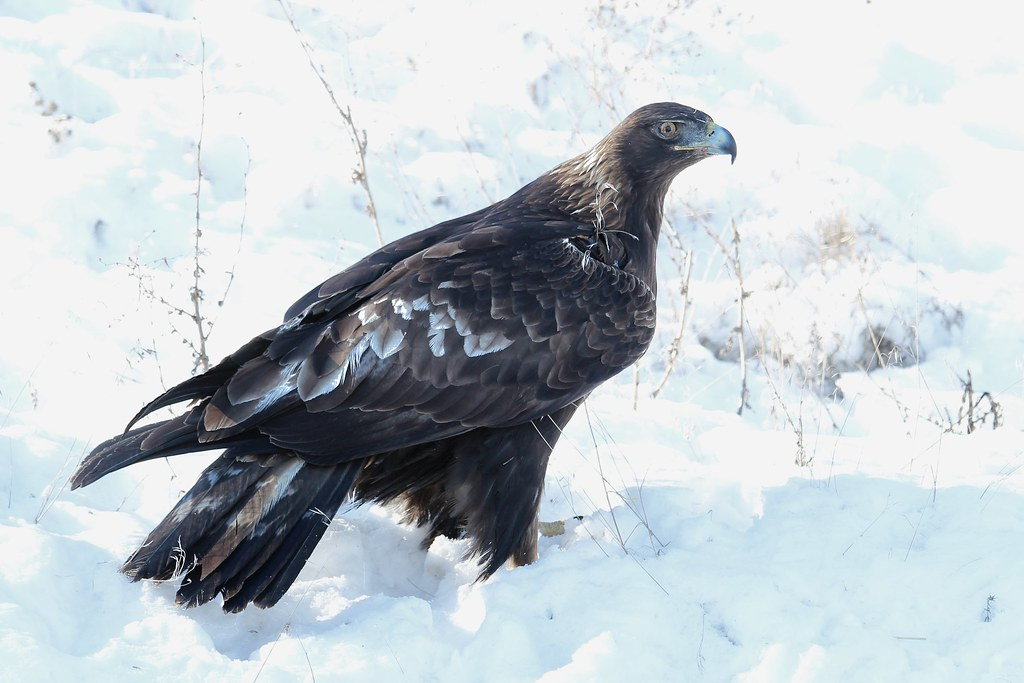
Flickr
Golden eagles may not seem like your typical land predator, but these birds of prey are powerful hunters in their own right. With their sharp talons and incredible eyesight, they can swoop down and capture prey as large as foxes and young deer. In parks like Yellowstone, golden eagles are active year-round and can often be seen soaring high above the landscape in search of their next meal. While they’re typically not a direct threat to humans, they should be watched from a distance due to their strong hunting instincts.
Lynxes
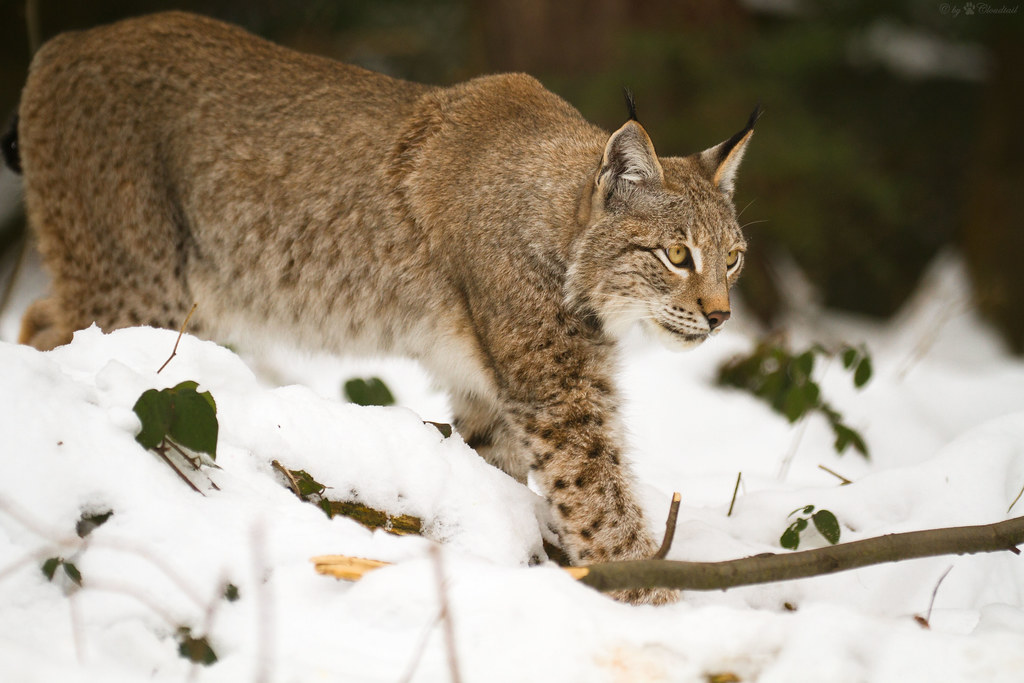
Flickr
The Canada lynx, with its tufted ears and dense fur, thrives in colder climates and remains active during winter. Preferring dense forests and cold environments, these cats are primarily nocturnal, making them elusive to park visitors. They are expert hunters, primarily preying on snowshoe hares, but they are known to take on other small mammals. Although lynxes are solitary animals and not typically a threat to humans, their presence in national parks serves as a reminder that the wilderness is full of active predators, even during winter months.
Wild Turkeys

Flickr
While they may seem harmless, wild turkeys are territorial and protective of their nests, especially in the winter when they are trying to secure food and shelter. Though they are not as dangerous as larger predators, wild turkeys can display aggressive behavior when they feel threatened, especially during breeding seasons. In the absence of bears, turkeys may seem like an unlikely contender for danger, but their sharp beaks and powerful wings can make them formidable opponents for smaller predators and even for humans who accidentally stumble too close.
Red Foxes

Pix4free
Red foxes are opportunistic predators that thrive in national parks throughout the year. Known for their cunning, these foxes hunt small mammals, birds, and even insects. Their adaptability to cold environments makes them active during the winter, and while they may not pose a direct threat to humans, their presence is a reminder of the dynamic wildlife that continues to hunt while bears hibernate. Their ability to blend into the landscape and use their keen senses to locate food makes them one of the quieter but more persistent hunters in the wild.
Wolverines
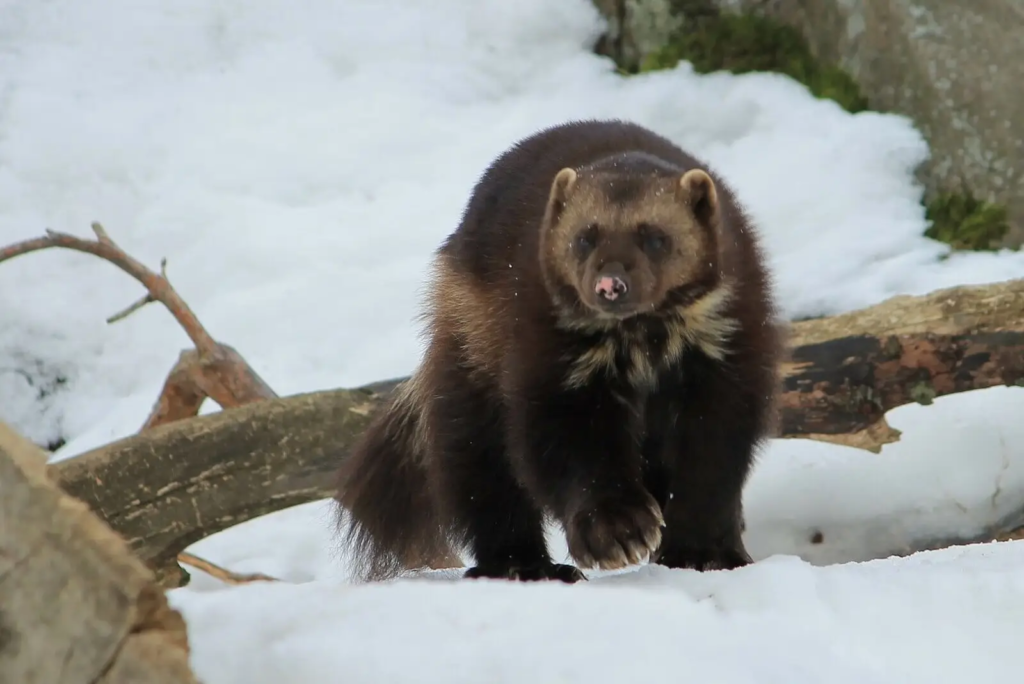
Animalia
Wolverines are ferocious animals, often seen as a symbol of tenacity and strength. These highly territorial creatures roam vast areas of national parks in search of food, and while they primarily scavenge, they can be dangerous to smaller animals. Wolverines are known for their resilience in harsh conditions, often surviving in areas with deep snow and cold temperatures. While they are not commonly encountered by humans, they are apex predators in their own right, capable of taking down prey much larger than themselves when the opportunity arises.
Grizzly Bears (While Still Active)
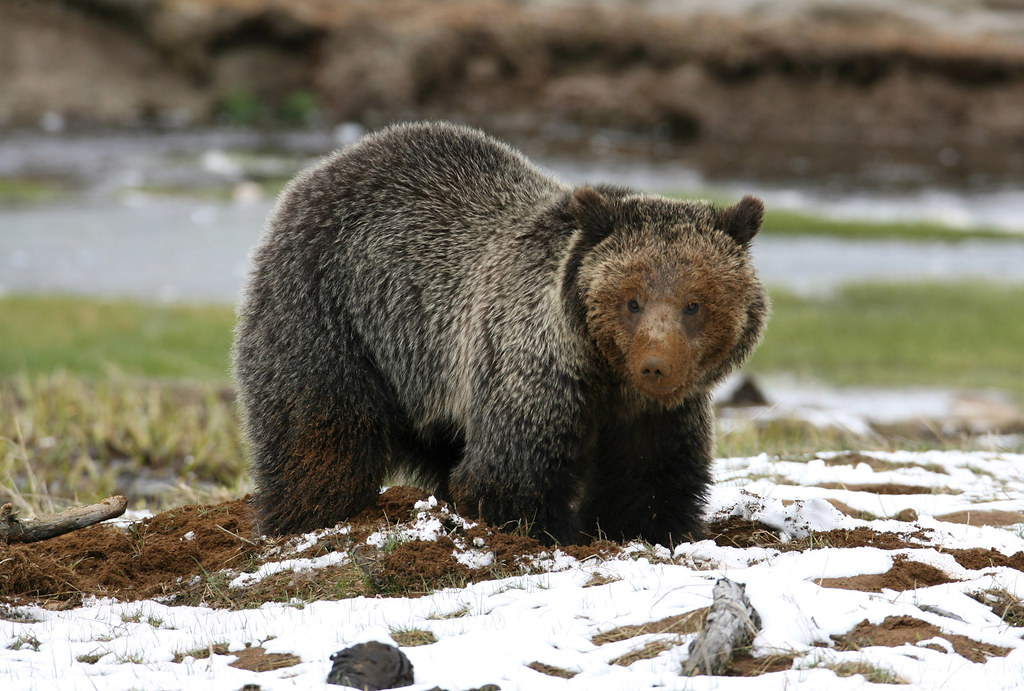
Flickr
Though many of Yellowstone’s grizzly and black bears are in hibernation during the winter months, there are always exceptions. Some bears, particularly in warmer areas or at lower elevations, may remain active when food is available. These powerful predators are opportunistic feeders and can be incredibly dangerous when threatened or hungry. While most of Yellowstone’s bears are sleeping during the coldest months, it’s crucial for visitors to stay alert, as there is always a possibility that some of these apex predators are still roaming the park.


